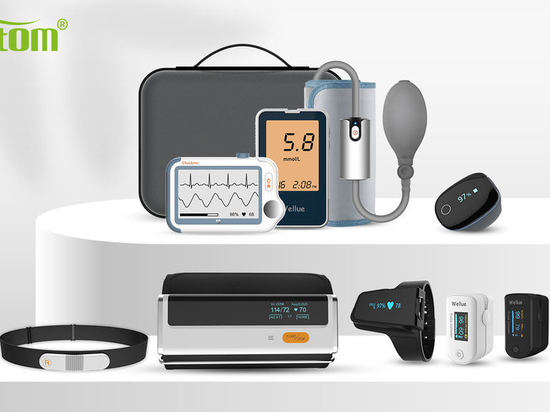
#Product Trends
How does POCUS (Point-of-Care Ultrasound) work?
Ultrasound is one of the most used diagnostic imaging techniques in the world.
Not only can Ultrasound be used to image babies in utero, but also be used to image many parts of our bodies, and POCUS is a relatively new concept. POCUS, short for point-of-care ultrasound, refers to the practice of trained medical professionals using ultrasound to diagnose patients anywhere, either in modern hospitals, ambulances or remote villages. To support this practice, portable ultrasound came into being, allowing clinicians to diagnose and treat patients more quickly and accurately in a non-invasive manner without traveling to the radiology department.
In this article, we are going to share with you some basic ideas about POCUS, including its definition, applications and benefits.
How Did POCUS Come into Being?
The application of ultrasound enjoys a long history. Dr. Karl Theodore Dussik was believed to be the first to use sonogram for medical diagnosis in 1942, when he transmitted an ultrasound beam through the skull of a human to detect brain tumors and, later in the same year, published the first medical report on ultrasound after conducting research on brain transmission ultrasound in Austria, marking the first application of ultrasound in the medical field. Medical ultrasound has been gaining popularity for its wide range of inspections, high accuracy, fast inspection rate. It does not need to perform incision, leaves no contraindications, and is good for repeated inspections.
However, the original ultrasound device was too bulky to move. Its immobility restricts it from screening patients anytime, anywhere. In order to achieve portability so that it can be used in case of emergency care and treatment, portable ultrasound has emerged as required, specifically targeting point-of-care ultrasound practice. Portable ultrasound has been increasingly recognized and welcomed in medical institutions, as it is more portable, easier to operate, and renders images clearly - no wonder Portable ultrasound is gaining more market share and catching up with traditional ultrasound gradually.
What Makes Portable Ultrasound Special
Regardless of their wide applications in many sectors and industries, portable ultrasounds are more commonly applied in clinical practice, as they significantly contribute to the inspection of abdominal organs and fetal development during pregnancy. Moreover, portable ultrasounds are found to be more accurate in the examination and diagnosis of superficial areas and small organs (such as thyroid and breast) over black-and-white ultrasounds. Ultrasound can make better judgments by observing the size of the vascular lumen, the flow speed, direction of blood and the establishment of collateral circulation.
Portable ultrasound is very effective during a disaster for its small size, lightweight and high time sensitiveness.
In the past, many people lost their lives in disasters and catastrophes without timely treatment. For example, in urgent situations such as earthquakes, most of the victims were injured by collapsed houses, mostly in their livers, lungs and other internal organs. Portable ultrasound functions exactly like the traditional ultrasound by looking inside their bodies and checking various organs, including hearts, lungs, kidneys, livers, spleens and muscles. Better even, portable ultrasound is superior to traditional ultrasound due to its lightness and fast imaging, allowing the doctor to conduct rapid diagnosis and triage. Only in this way can more lives be saved within 72 hours, the golden rescue time.
4 Main POCUS Clinical Applications
Portable ultrasound has a variety of potential clinical applications, ranging from bedside diagnosis to guided intervention. Like traditional ultrasound, portable ultrasound can be used to clearly visualize a series of organs. What makes it superior to traditional ultrasound is the portability of portable ultrasound, allowing these procedures to be performed more widely, not just in hospitals. When it comes to guiding procedures like biopsy and needle aspiration, portable ultrasound plays a vital part too.
Musculoskeletal imaging
With the development of technology, ultrasound has become one of the most rapidly developing techniques in musculoskeletal imaging in recent years. Musculoskeletal ultrasound is a powerful and painless tool used by radiologists to provide real-time images of muscles, tendons, ligaments, nerves, and cartilage throughout the body. Portable ultrasound is one of the representatives of this field.
In musculoskeletal imaging, portable ultrasound has been of greater use, as it helps judge if the tendon is torn, or how badly it is torn. For those suffering from pain and swelling in hands and feet, ultrasound can quickly and reliably make a diagnosis to determine whether it is caused by tenosynovitis or not. In this way, the quality of care can be improved greatly. Also, ultrasound can assess and evaluate the situation of chronic arthritis.






